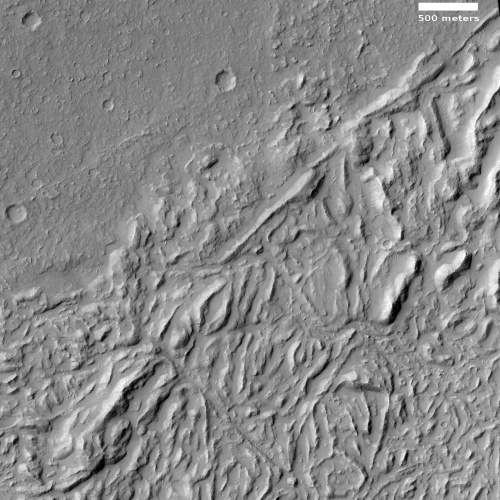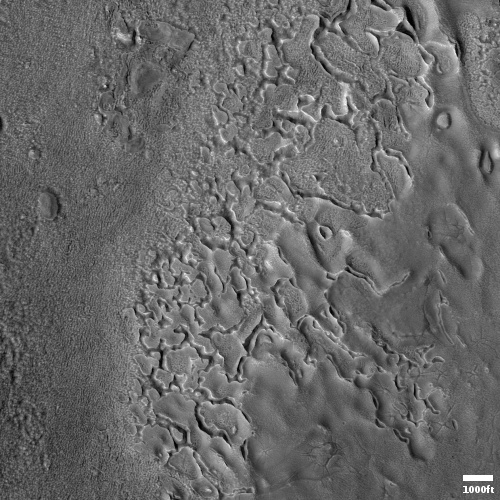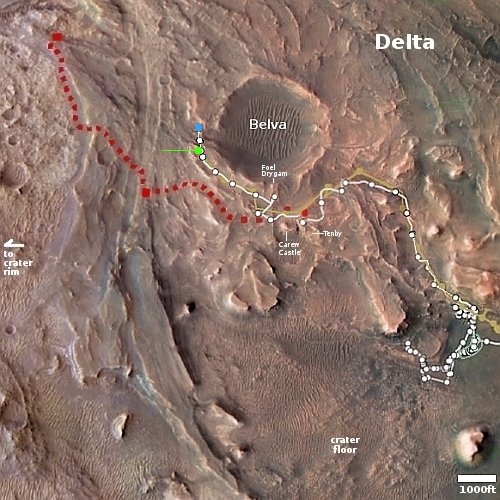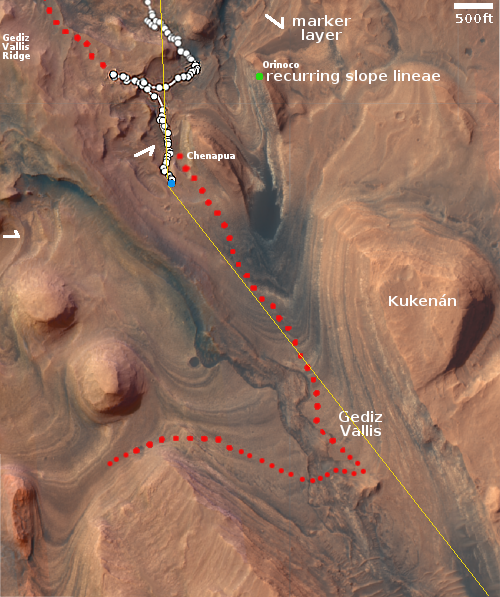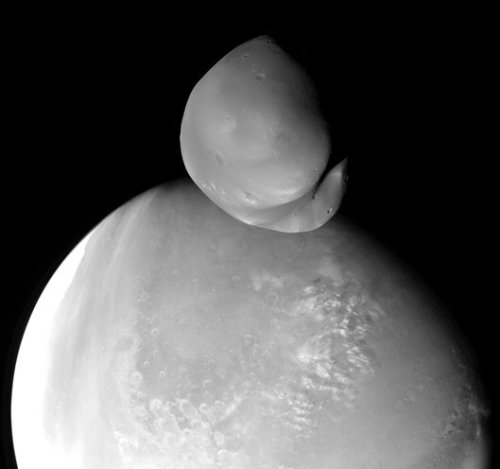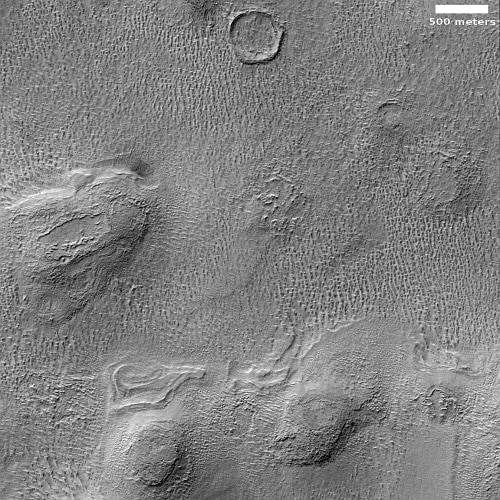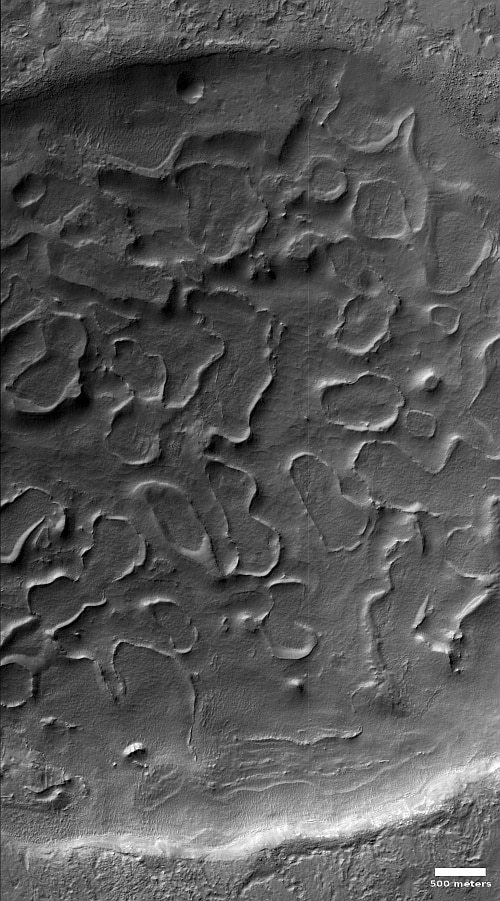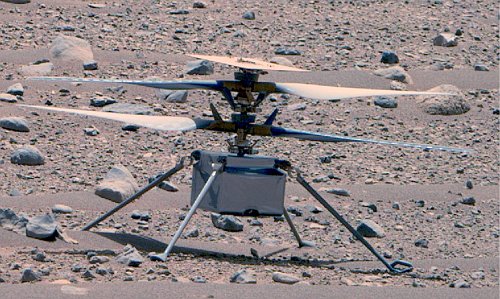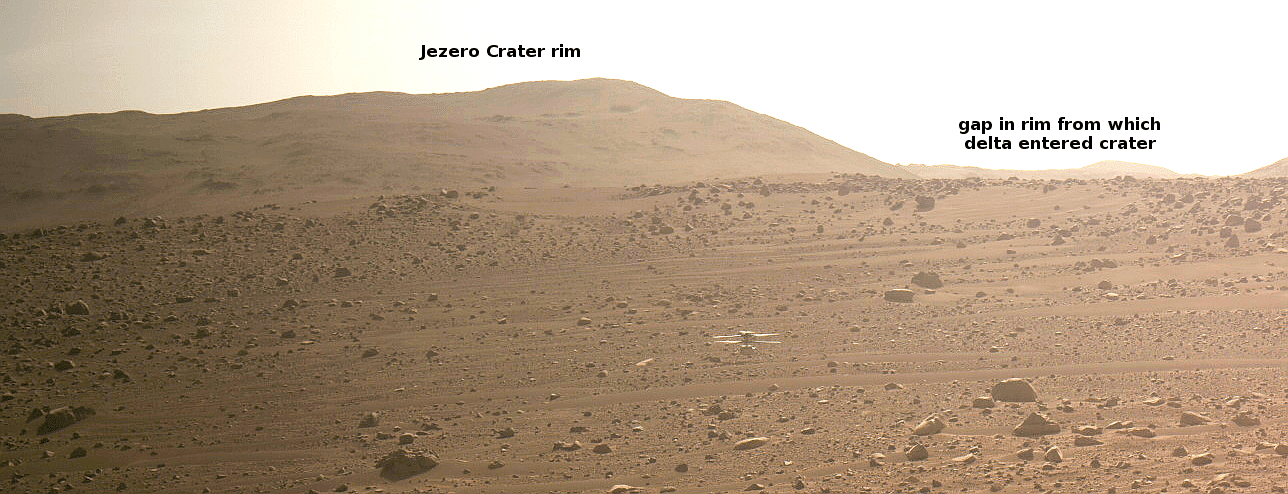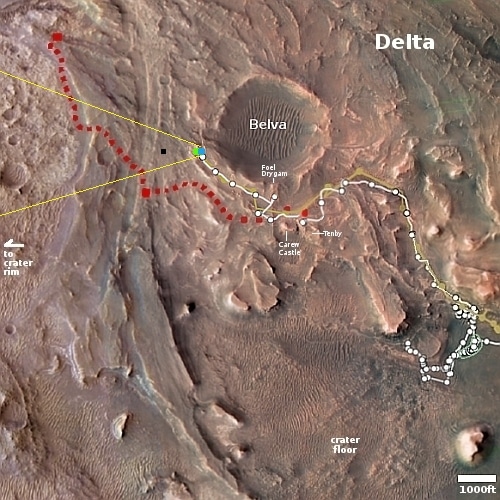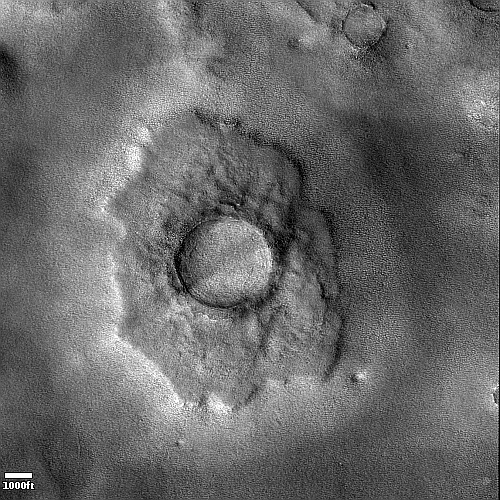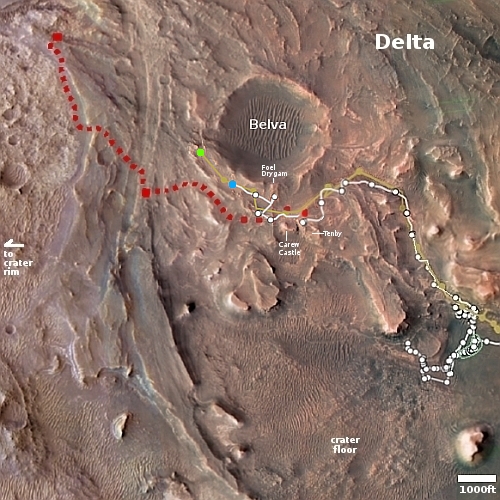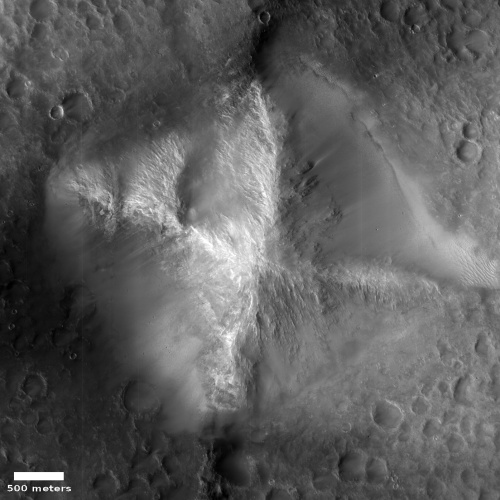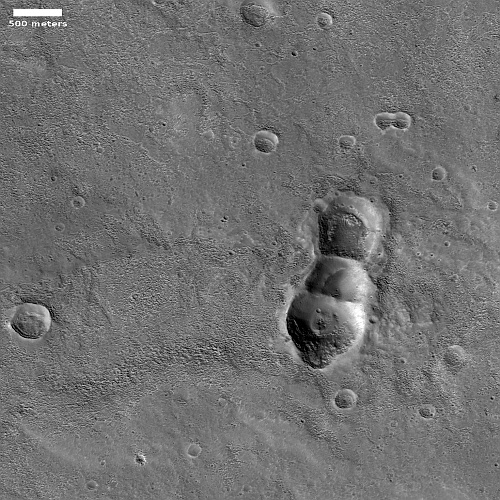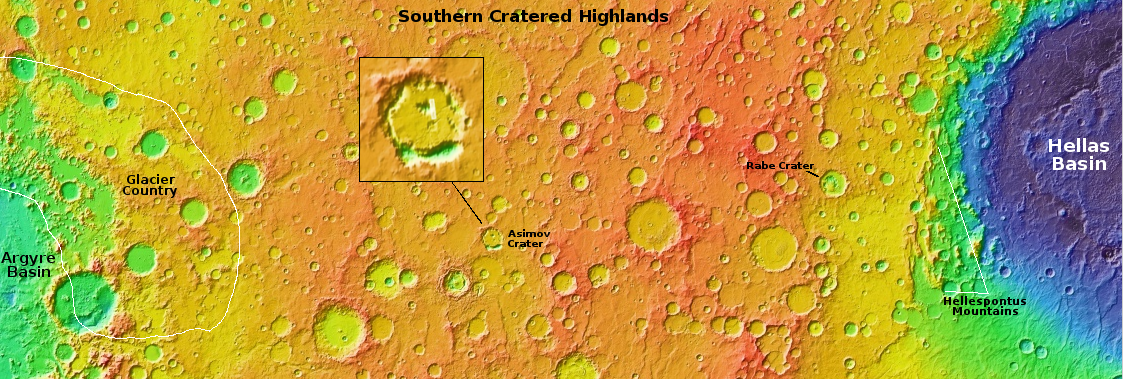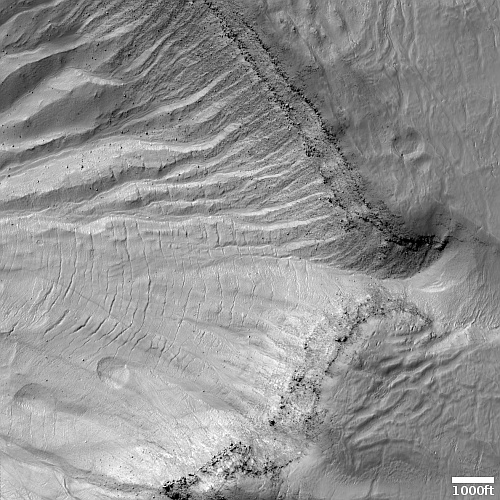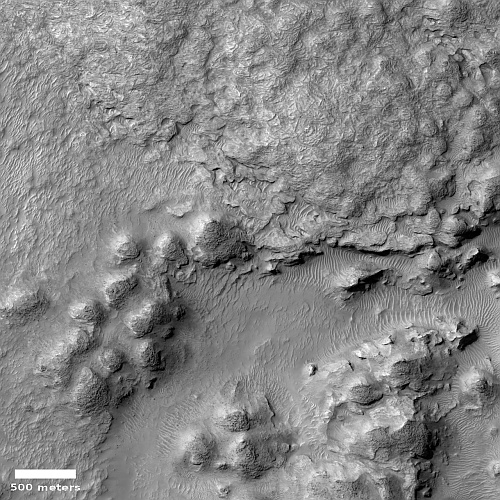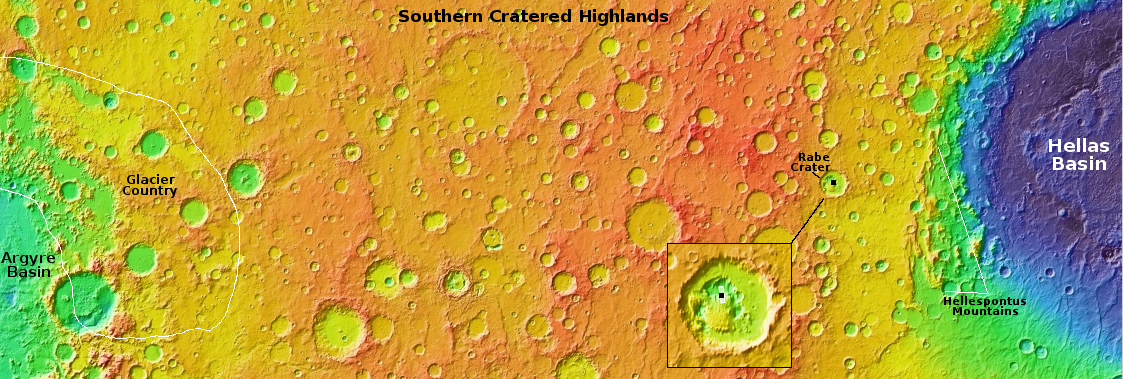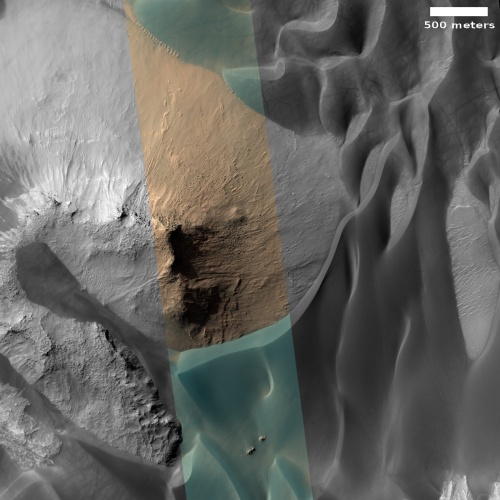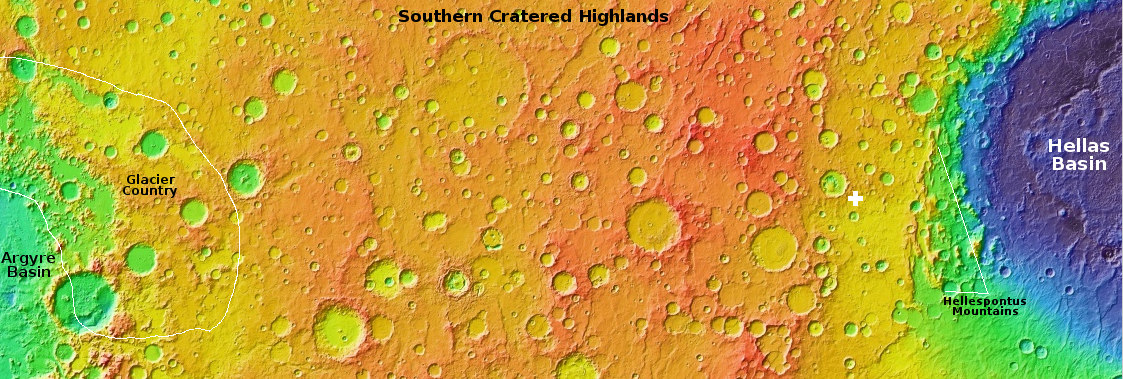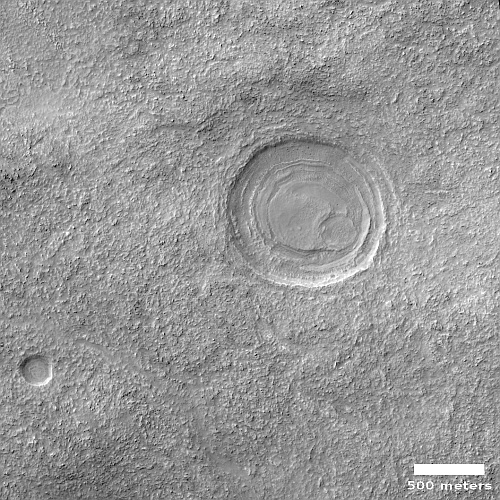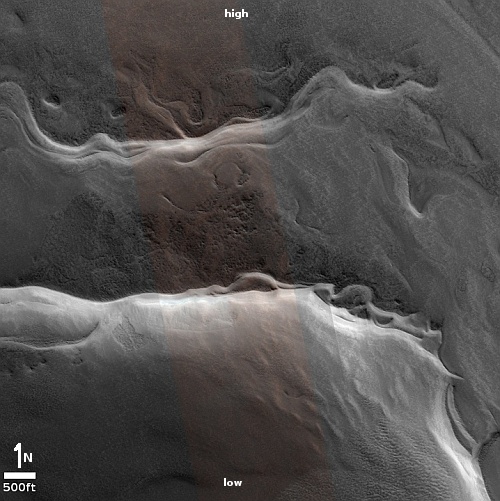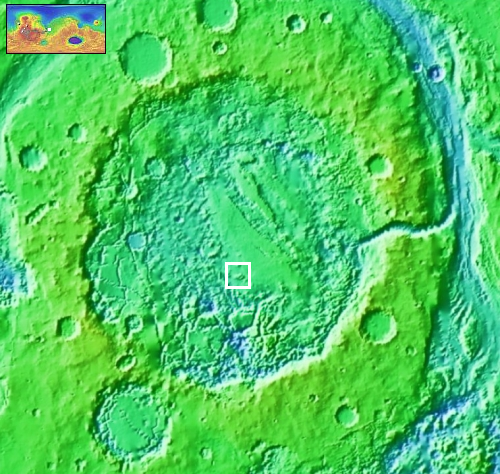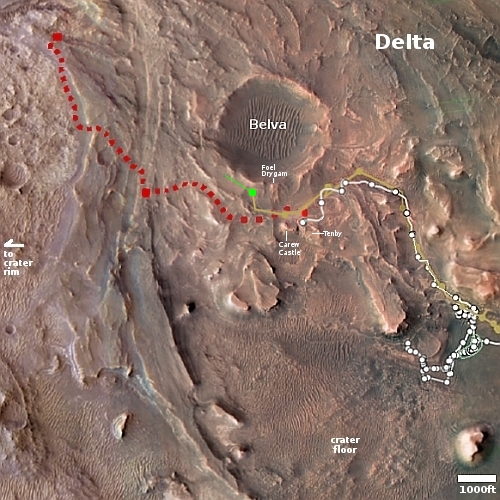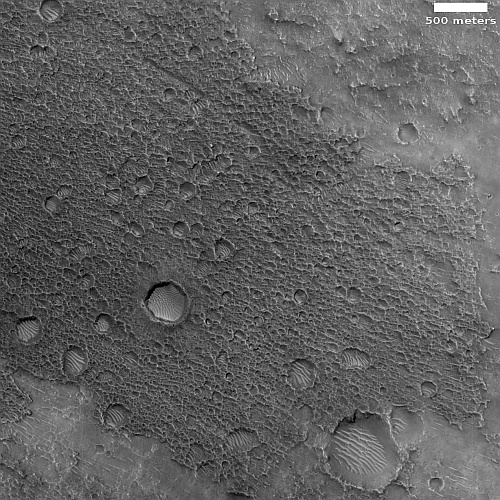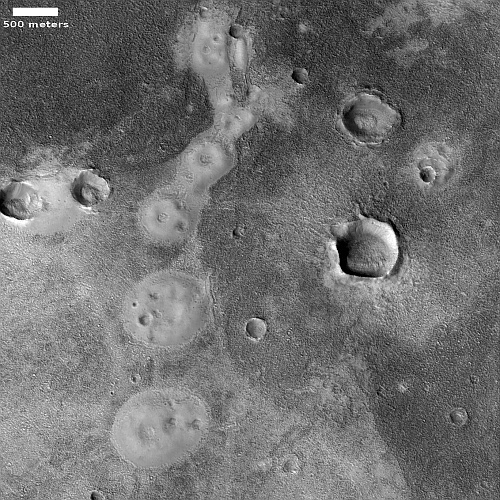Frozen waves of lava on Mars
Cool image time! The picture to the right, cropped and reduced to post here, was taken on January 15, 2023 by the high resolution camera on Mars Reconnaissance Orbiter (MRO). It shows an area where the ground suddenly transitions from a crazy quilt of criss-crossing hollows and ridgelines to a very flat and smooth plain.
The location is at 21 degrees south latitude, so this is in the dry equatorial regions. Though it has a small resemblance to the chaos terrain that is found in many places on Mars, mostly in the mid-latitudes where glaciers are found, the scale here is too small and the ridges and canyons are not as sharply drawn. While chaos terrain usually forms sharply defined large flat-topped mesas with steep cliffs, here the ridges are small and the slopes to the peaked tops are somewhat gentle.
» Read more
Cool image time! The picture to the right, cropped and reduced to post here, was taken on January 15, 2023 by the high resolution camera on Mars Reconnaissance Orbiter (MRO). It shows an area where the ground suddenly transitions from a crazy quilt of criss-crossing hollows and ridgelines to a very flat and smooth plain.
The location is at 21 degrees south latitude, so this is in the dry equatorial regions. Though it has a small resemblance to the chaos terrain that is found in many places on Mars, mostly in the mid-latitudes where glaciers are found, the scale here is too small and the ridges and canyons are not as sharply drawn. While chaos terrain usually forms sharply defined large flat-topped mesas with steep cliffs, here the ridges are small and the slopes to the peaked tops are somewhat gentle.
» Read more

